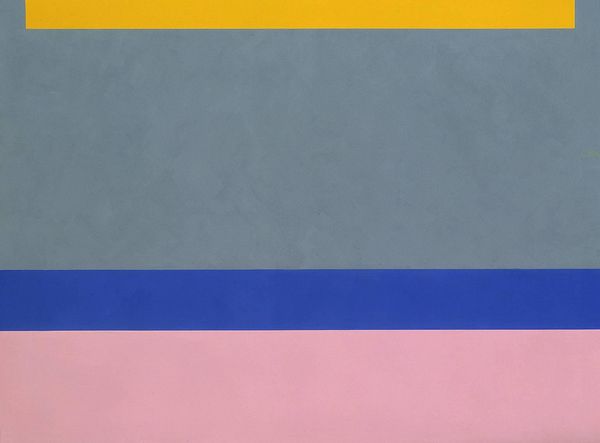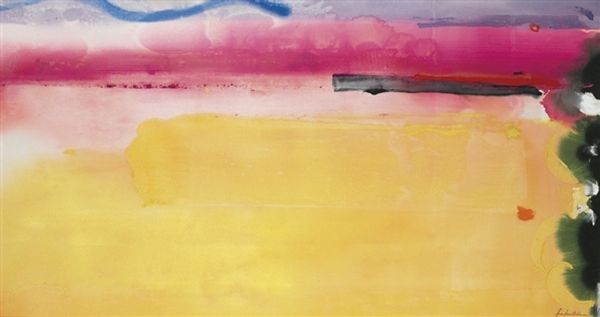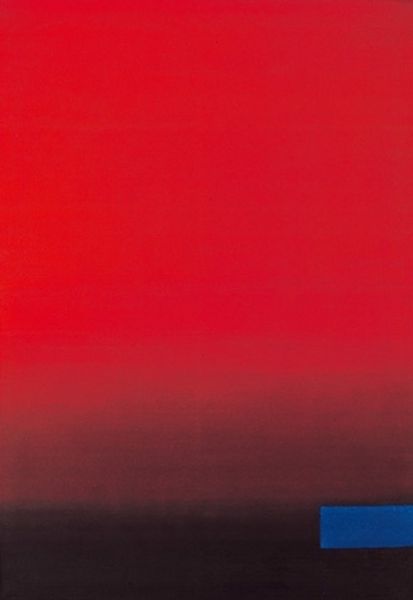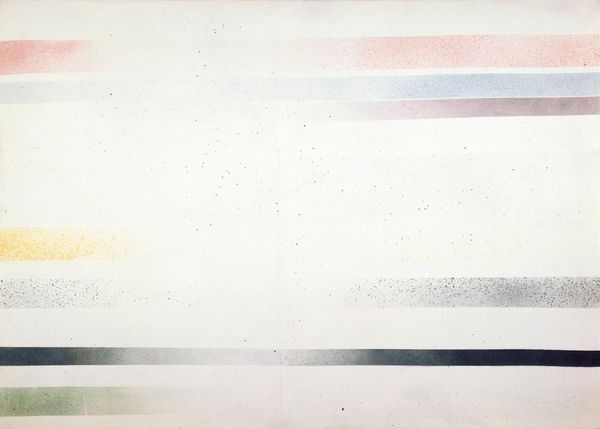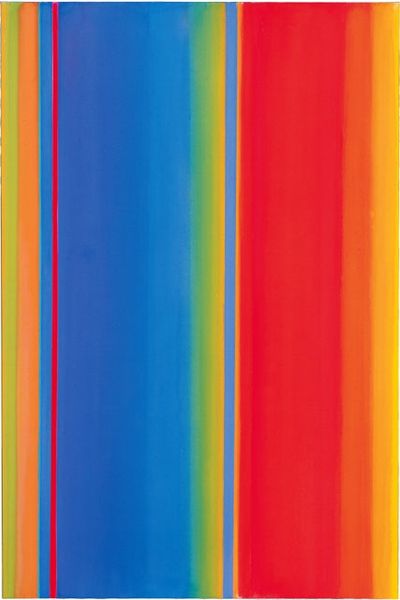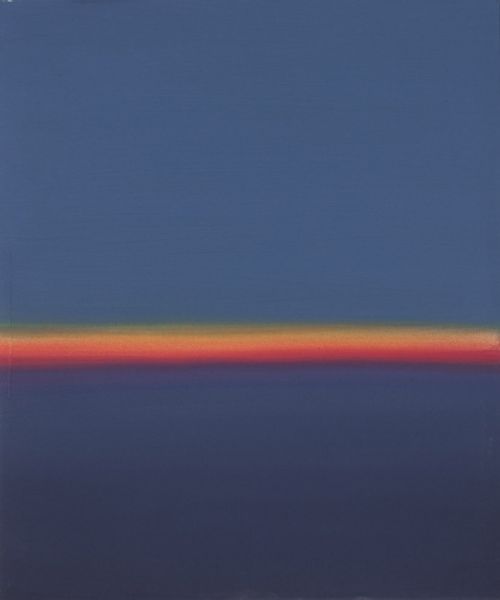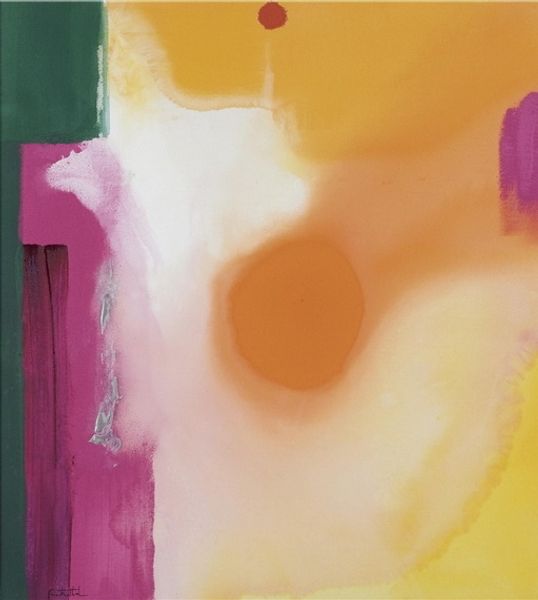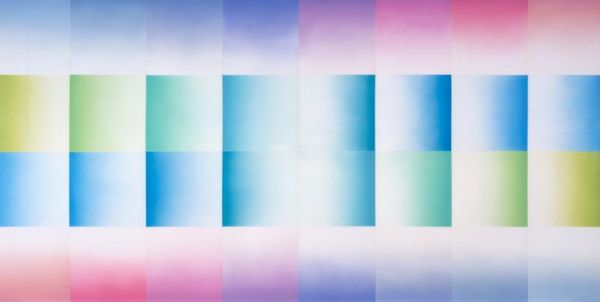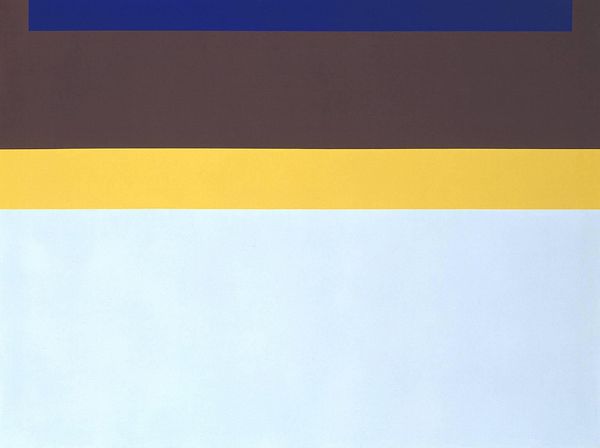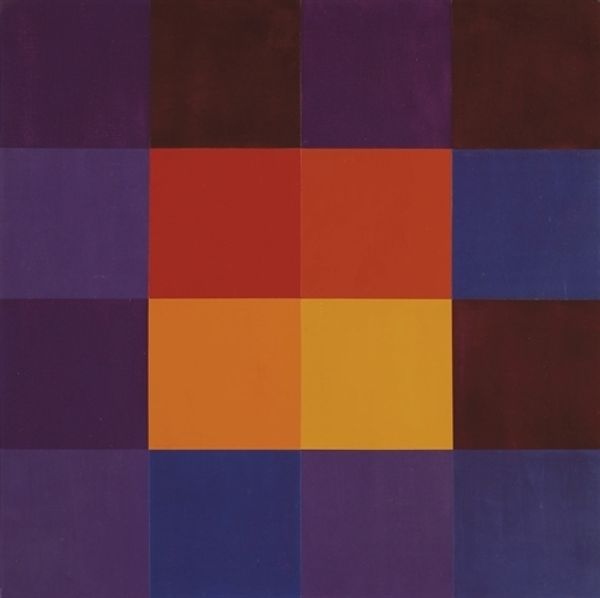
acrylic-paint, ink
#
op-art
#
op art
#
colour-field-painting
#
acrylic-paint
#
ink
#
geometric
#
geometric-abstraction
#
abstraction
#
line
#
abstract art
#
monochrome
Copyright: Ay-O,Fair Use
Curator: Looking at "Readymade Rainbow," created in 1964 by the Japanese artist Ay-O, the first thing that strikes me is its pure simplicity, these stacked, softly blurred color bands. It exudes such a sense of calm. Editor: Calm, yes, but almost artificially so. I’m immediately thinking about how those colors were achieved. Are we looking at heavily layered acrylic paint or the careful manipulation of ink here? I wonder about the texture. The term "readymade" also draws my interest—the choice of this word suggests an intentional elevation, almost industrialization, of what traditionally we understand as organic—something man-made taking nature's form? Curator: Absolutely, and it's vital to see Ay-O within the broader context of the Gutai group and his engagement with the Fluxus movement. These weren’t isolated aesthetic choices but responses to postwar cultural shifts and a rejection of traditional art institutions, not to mention his experimentation with sensorial art, or what he coined "environments." These rainbows became symbols, commenting on societal changes through popular imagery. Editor: Which, of course, raises the key question about the labor and manufacturing. Did he personally mix these colors or were these readily available materials? This subtle color gradation doesn’t feel easily done—we must consider it as part of his process—to what extent does the 'making of' dictate the final aesthetic appearance? And 'Readymade Rainbow', that very title points toward a consumerist appropriation of nature's beauty, as mass production renders even the most miraculous occurrence almost ordinary. Curator: Precisely, but it’s also essential to see how that seemingly straightforward visual choice became politically charged in the '60s and beyond. Color became a tool to disrupt the norm, challenge established power structures, and suggest utopic social change via aesthetic experience. Think about the ways counterculture figures seized and repurposed this aesthetic strategy as well. Editor: That intersection of labor, intent, and available means… it all leads back to a fundamental query: can true originality ever truly exist when artists must always engage with existing products? It’s clear how each carefully selected material can hold symbolic power as art meets the production line. Curator: Exactly! It's been very insightful thinking about it in this new light. I appreciate understanding it outside of pure artistic creation alone. Editor: A perspective which invites more examination in these post-industrial times we find ourselves in—fascinating conversation!
Comments
No comments
Be the first to comment and join the conversation on the ultimate creative platform.


